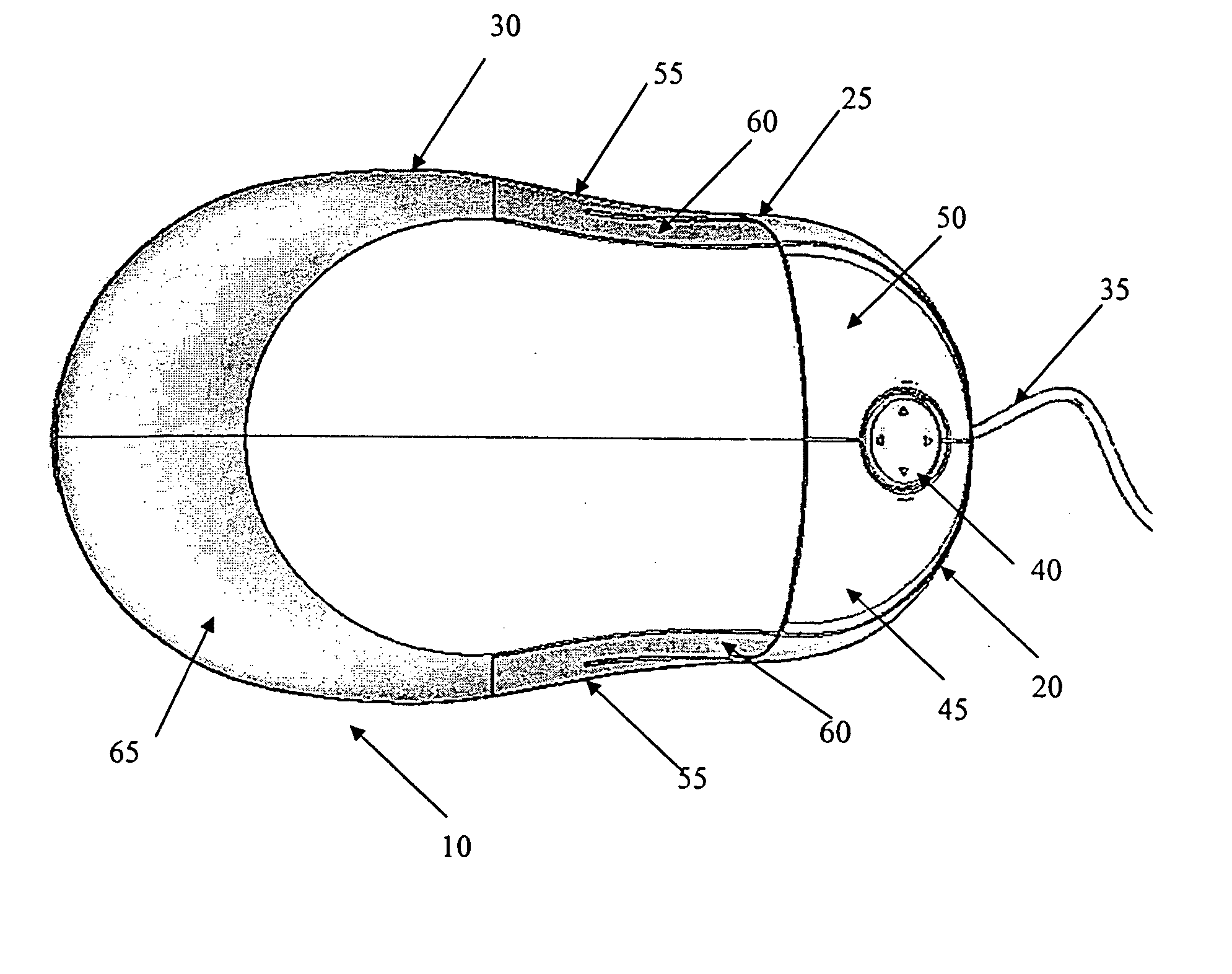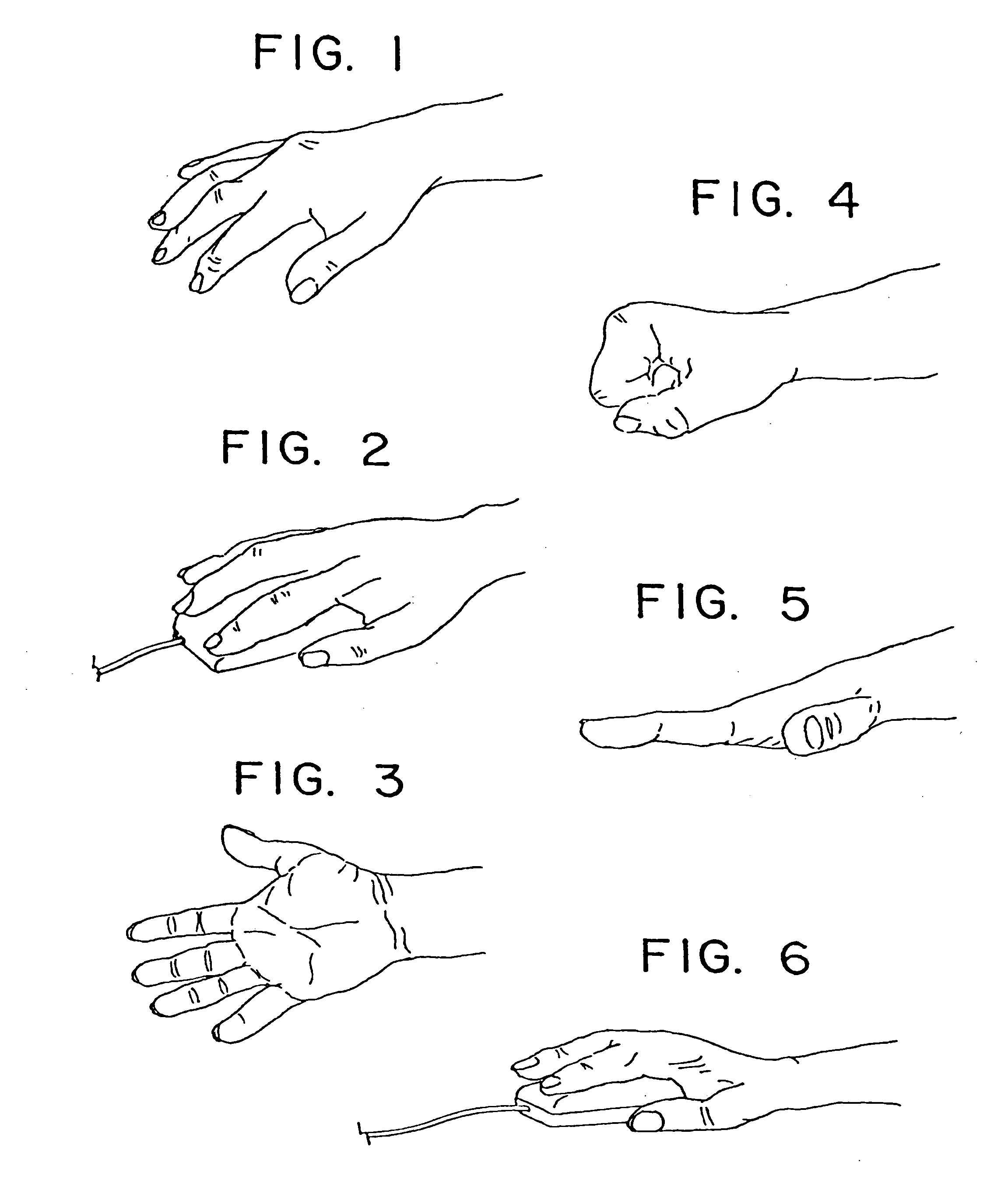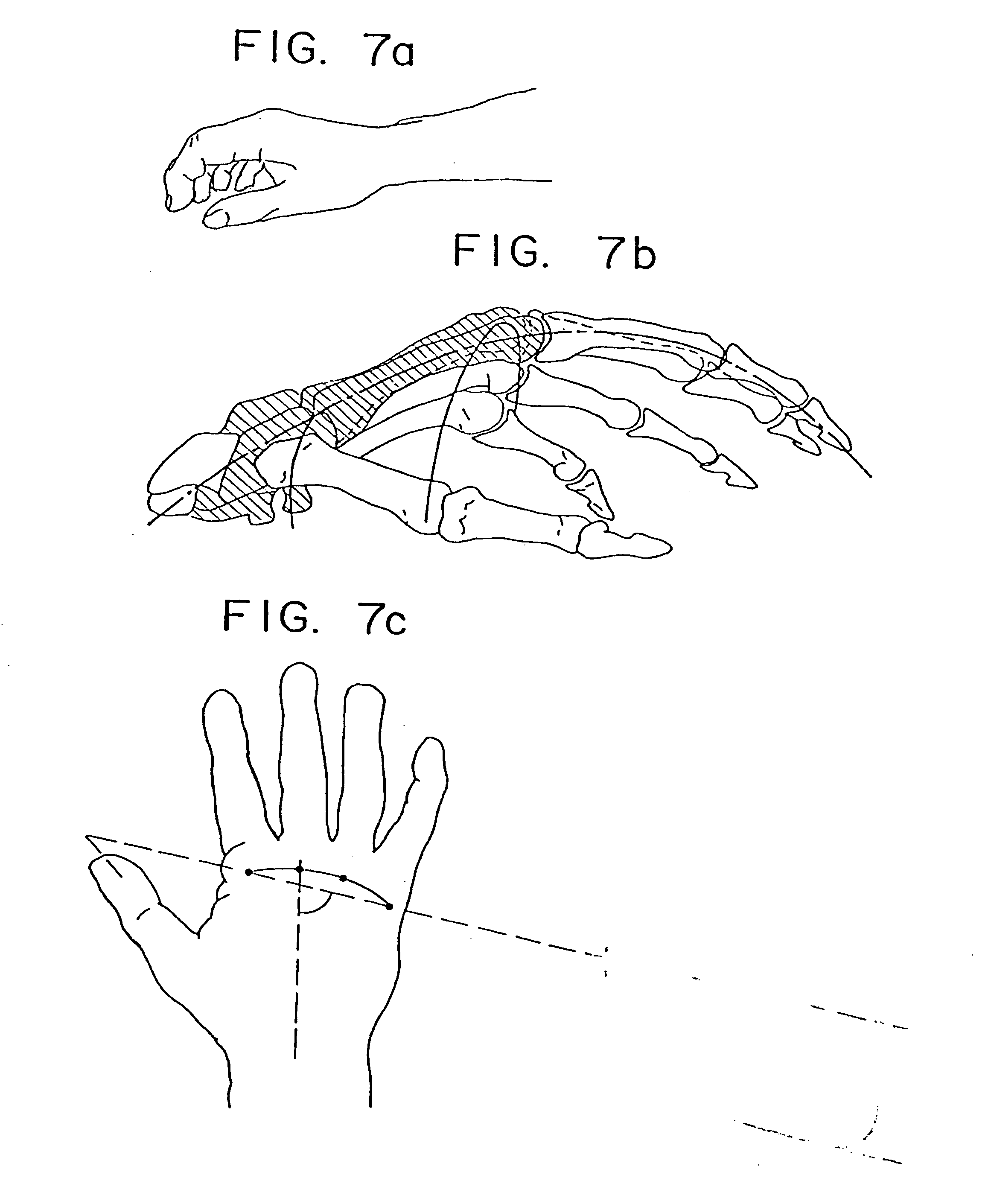Ergonomic pointing device
- Summary
- Abstract
- Description
- Claims
- Application Information
AI Technical Summary
Benefits of technology
Problems solved by technology
Method used
Image
Examples
Embodiment Construction
[0078] Referring now to the several views of the drawings, there is depicted a data input device in accordance with the present invention.
[0079]FIG. 1 depicts the hand in pronation, the forced position which is used with an ordinary mouse (FIG. 2). FIG. 3 is the hand in supination, the opposite of the position shown in FIGS. 1 and 2. FIG. 4 shows the band in flexion, with effort of the flexor muscle groups. FIG. 5 depicts effort of the extensor muscle groups when the hand is in extension. FIG. 6 depicts use of an ordinary mouse with the hand extended.
[0080]FIG. 7a depicts the hand in the “physiological position” or “position of function.” The “position of function” is discussed in The Hand, (1985) Vol. II, Chapter 53, pp. 497-501, published by W. B. Saunders Company, the disclosure of which is hereby incorporated by reference as though fully set forth herein. The skeleton of the hand has a transverse and longitudinal (i.e., double) concavity, which gives it the shape of a cup with...
PUM
 Login to View More
Login to View More Abstract
Description
Claims
Application Information
 Login to View More
Login to View More - R&D
- Intellectual Property
- Life Sciences
- Materials
- Tech Scout
- Unparalleled Data Quality
- Higher Quality Content
- 60% Fewer Hallucinations
Browse by: Latest US Patents, China's latest patents, Technical Efficacy Thesaurus, Application Domain, Technology Topic, Popular Technical Reports.
© 2025 PatSnap. All rights reserved.Legal|Privacy policy|Modern Slavery Act Transparency Statement|Sitemap|About US| Contact US: help@patsnap.com



